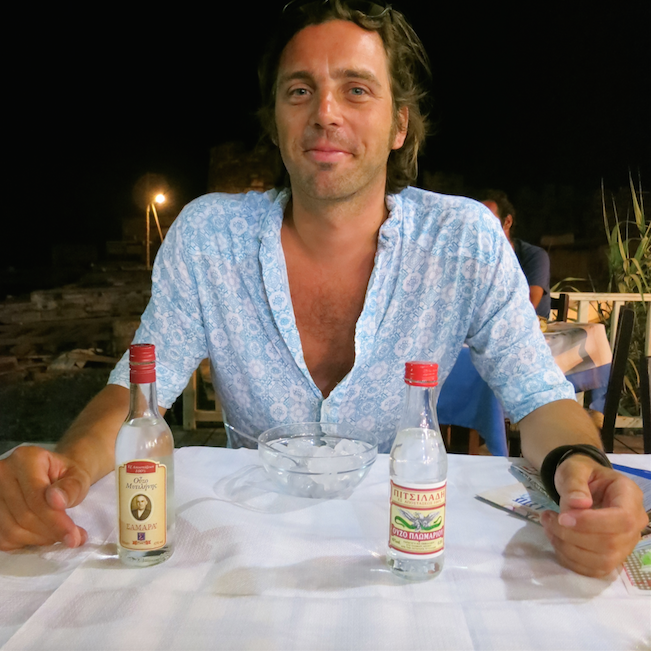Detroit seems to symbolise the fall of the American Dream. After automation, delocalisation, racial tension, the energy crisis, the economic recession, corruption, bad governance, massive unemployment, and the exodus of a big part of the population, the formerly prosperous Motor City became like a ghost town, with entire streets deserted and rundown houses selling for $100. Visual artist Ryan Mendoza shipped such a house to Europe as a memorial. Before moving to its permanent site at the Verbeke Foundation in Belgium (“the best place it could be”), it premiered at Art Rotterdam. DAMN° met up with the artist, covered in white paint stains.

Ryan Mendoza: I am American, but I’ve lived in Naples for 15 years. After I met my wife Fabia, we moved back and forth between Naples and Berlin. Having run away from being an American all this time, I had the desire to reconnect. I realised that the more I ran away from it, the more I was dragging these chains behind me. This project was a way of getting America back to me. When I went to Detroit, I started to change. My megalomaniac artistic ego was a bit crushed. Particularly when I saw what my country had done to its own people. How can a country tell others what to do if can’t fix its own problems at home? In the documentary that Fabia made about the project, you see rows and rows of houses that have been burned down or have their roof falling in. You have 80,000 houses in a state of disrepair. People’s memories are left inside there. It is like a plague has struck the houses. Imagine a city where everybody has a disease; they all die and nobody buries them. Detroit is an open, buried city.

Ryan Mendoza painting the house white in Rotterdam, 2016 Photo: Fabia Mendoza
 This article appeared in DAMN°55. Order your personal copy.
This article appeared in DAMN°55. Order your personal copy.
RM: I asked the Mayor to be part of the project. He said no. It was not in his interest. His interest was to rehabilitate certain posh areas in certain neighbourhoods; others are like cancer patients that are not worth being saved. They are falling apart; there are fewer services; the police have stopped going there, so crime has increased. They want to kill-off those neighbourhoods. They want them to die and turn into farmland. But the people there don’t want to farm tomatoes!

The Thomas family house was moved from Detroit to Rotterdam, rebuilt and painted white. Photo: Fabia Mendoza
DAMN°: You also did some research regarding the history of the house ...
RM: The Thomas family lived there for over 30 years. The grandfather was a blind bicycle repairman. He had 35 grandchildren. We found so many photographs in the house. I saw it as a testimony to memory. I want to remember these people. We spoke with some of the family members about their fond memories of the house. It was lost to taxes. It went to auction and then somebody bought it. I don’t really know the price. It was donated to me by my friend Greg Johnson.
DAMN°: When you first saw the house, was it in a very bad state?
RMe: Yes, the two boys living there were drug addicts and their mother had diabetes. There were syringes everywhere. Amongst all the other things strewn around were the memories. You could see all of the hope in the house. Like a before and after thing. In the photos from back in the day, you could recognise some of the objects that were left in the house. The radio, for example, is the radio that we’re still using here.
DAMN°: In order to bring the house to Europe, you almost had to deconstruct it.
RM: Doing that was something between an autopsy and an archaeological finding. I had to work together with other people, almost secretly, to bring it over. I painted it all in white to cover the suffering it went through. It points blame at the government for not having done more for the people of Detroit. Some people think this project is exploitation. They see it as a white guy who lives faraway taking this house belonging to black people, putting it here and making money. It is not about that! It’s about connecting! And making public something that otherwise stays in obscurity. The city wants to eliminate all these houses. They told me: “We don’t want this to be part of it. We don’t want Detroit to be seen in that light.” Not seeing Detroit in that light is not seeing Detroit!
DAMN°: In the meantime, small businesses are popping up, the city is attracting artists from all over the world, and there are some interesting urban experiments going on. Is there hope for Detroit?
RM: There is a lot of gentrification, which has good sides to it, but also drawbacks. The locals must be thinking: What will we do when all the white people with their Mac computers move to another city afterwards? Gentrification is not the solution. There are a lot of places that are being renovated, but black people will never go there. Still, there is always hope. The people of Detroit are the hope.



